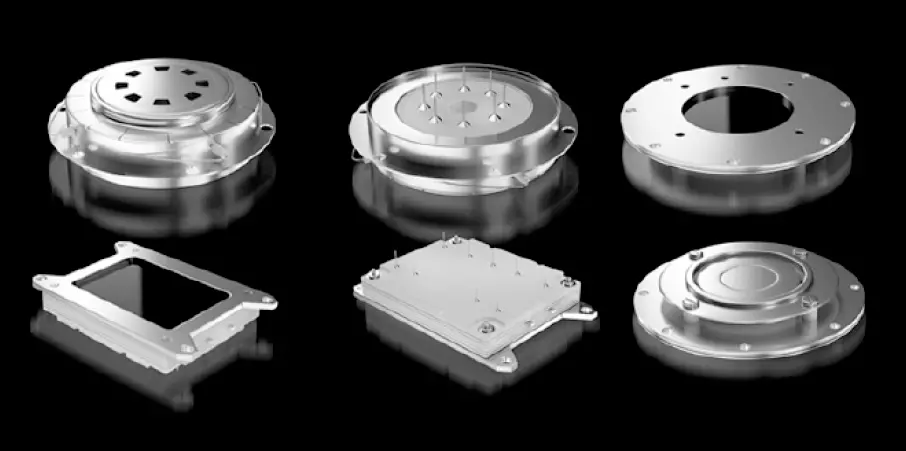MCP detector consists of an assembly of two or more microchannel plates (MCPs). Its operating principle relies on the detection and amplification of the primary flux of charged particles.
VTC BASPIK detectors are manufactured with high quality microchannel plates of different sizes, shapes and technical parameters.

The following versions of the products are available
- with 18, 25, 42, 48, 50, 78 mm active area;
- single MCP, chevron stack and Z-stack;
- with metal anode, without anode, with phosphor screen;
- with a mesh in front of the MCP;
- assembled on a vacuum flange;
- with different MCP resistance.
MCP detectors application:
- Astrophysics and space research
- Experimental nuclear physics
- Electron and ion microscopy
- Spectrometry
- Medical diagnosis and therapy
Space research
- Global real time monitoring of the Earth’s surface from satellites in geostationary and highly elliptical orbits
- Searching of space debris
- Solar wind particle detection
- UV and X-ray detection
- Rare event detection
- Identification of the isotopic composition of solar and galactic particles in telescopic systems
Physical research
- Radiation detection in intensive magnetic fields
- Molecular beam experiments to study the potentials of intermolecular interactions
- Isotope analysis
- Spectroscopy
- Atomic collision physics experiments
- Research on high-energy differential ion and neutral particle scattering
- Nuclear physics research
Medical and pharmaceutical research
- Low-dose X-ray analysis
- Research of dynamics of visceral organs by obtaining a two-dimensional image of the subject
- Gas analysis for dangerous viral and bacterial infections
- Time-of-flight mass-spectrometry for new drug development and biomolecule recognition
- Ion beam profile control in accelerators in radiation therapy
Industrial applications
- Nondestructive analysis of three-dimensional compositions for the evaluation of semiconductor and nanostructural devices
- Microscope scanning in semiconductor manufacturing technology
- Surface elementary composition analysis